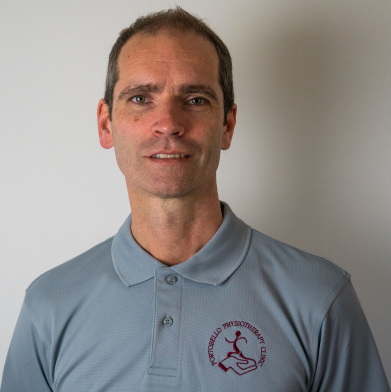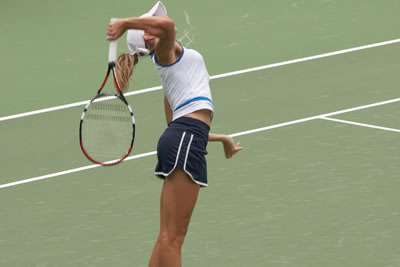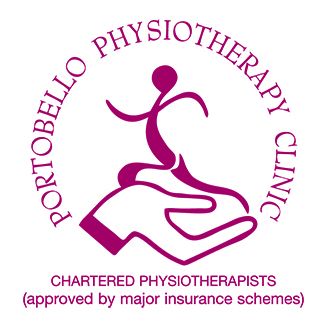Chartered Physiotherapists
Specialists in Musculoskeletal Physiotherapy
Tennis Injuries
Tennis is a dynamic and explosive sport that requires speed, endurance, strength, power and agility. The game of tennis places unique physical demands on the body and as such tennis players must be conditioned to meet these demands in order to perform at their peak and stay injury free.
Although the average duration of a tennis point is between 3 to 15 seconds depending on the court surface, completing a tennis match from start to finish can last several hours and in some cases longer than a marathon. Tennis players are required to push off explosively and change direction at speed multiple times during a tennis rally. That coupled with the repetitive nature of the game having to impact the ball over and over again means that a player is often at high risk of developing certain acute and overuse injuries.
Though many injuries that occur in tennis are common to other sports tennis does have a unique profile of injuries. The research shows that in the vast majority of cases the more acute injuries tend to be located in the lower limb, whilst chronic overuse or repetitive strain injuries are found predominantly in the upper limb. The areas of the body most susceptible to injury in tennis players are the elbow (20%), ankle & foot (16%), shoulder (15%), knee (12%), back (10%), wrist (6-22%), calf (6%), Thigh (5%).
David O’ Connell and Derek Ryan are former Irish tennis internationals working as chartered physiotherapists and strength and conditioning specialists at Portobello Physiotherapy Clinic. Having played the game at elite level both David and Derek have a special interest in both tennis related injuries and conditioning. Both of them treat and provide personal training to tennis players of all levels and ages.


Common injuries sustained by tennis players
A tennis player’s wrist joint must be able to withstand large forces acting on it as the muscles and tendons surrounding the joint fight to control the racket head on ball impact. Due to the repetitive nature of the sport the wrist absorbs large forces over and over again during a tennis match. One commonly injured tendon in tennis players is the Extensor Carpi Ulnaris (ECU) tendon which attaches into the wrist joint on the same side as your 5th digit or small finger. Although ECU tendinopathy’s are predominantly caused by the repeated bending and extending of the wrist joint during play, it can also result from an acute overload of the wrist joint. For example ECU tendinopathy may result acutely due to an off centre impact between the ball and racket head as these forms of impacts have been shown to create up to seven times greater torque forces on the wrist joint compared to centred impacts.
Tennis players suffering with ECU tendinopathy commonly complain of pain in the wrist joint on impacting the ball, in more severe cases just bending or extending the wrist joint whilst gripping the racket can be painful. The tendon is often tender to press down on and in acute presentations where the tendon has been strained there may be the presence of swelling.
Treatment of ECU tendinopathy usually involves a period of rest or modified play whilst addressing any factors that may have caused or predisposed the player to developing the condition. Hands on manual therapy to address any muscle tightness or joint stiffness may be used in combination with other treatment modalities (dry needling, Laser, heat therapy) to help reduce pain and aid healing. The cornerstone of any wrist pain program will involve a progressive strengthening program to address any weakness in the muscles and tendons around the wrist helping to prevent future reoccurrence.
Tennis elbow is an overuse tendinopathy of the common extensor tendon which attaches into the outside of the elbow joint. As high as 50% of all tennis players will suffer from the condition at some stage in their playing careers. Novice tennis players taking up the game are thought to be most at risk due to poor playing technique. In particular tennis players who perform the single handed backhand stroke with a leading elbow will typically contact the ball late with the wrist in a flexed and weakened position predisposing them to the condition. Other common causes include lack of strength in the muscles of the wrist/forearm and the use of inappropriate equipment (see section on tennis equipment below).
Symptoms of tennis elbow include pain on the outside of the elbow which may or may not refer down the forearm into the hand. Pain is aggravated by gripping the racket and on impacting the ball. The extensor tendon is usually tender to press at the point of its attachment into the outside of the elbow.
Treatment of tennis elbow usually involves a period of rest or modified play whilst addressing any factors that may have caused or predisposed the player to developing the condition. Hands on manual therapy to address any muscle tightness or joint stiffness may be used in combination with other treatment modalities (dry needling, Laser, heat therapy) to help reduce pain and aid healing. The cornerstone of any tennis elbow treatment plan will involve a progressive strengthening and stretching program to address any weakness and inflexibilities in the elbow and forearm helping to rebuild the tendon and reduce the risk of future reoccurrence.
As with all overhead throwing athletes, injuries to the shoulder joint in tennis players are common place. A tennis player on average will serve anywhere between 50 to 150 times per match. Professional players serve at speeds in excess of 125 miles per hour generating significant peak impact forces on the shoulder joint. Whilst there are a number of factors required for healthy shoulder mechanics, one of the most important muscle groups at play are the rotator cuff muscles which serve to stabilise and rotate the joint during the service action. Due to the high demands placed on this muscle group occasionally the rotator cuff tendon (the part that attaches the muscle to the bone) can become over strained and injured.
Tennis players will typically complain of pain in the front or back of the shoulder aggravated by overhead movement (serving & smashing), in some cases this pain may refer down into the upper arm on the affected side. In more severe cases of rotator cuff tendinopathy groundstrokes can be painful particularly during the follow through phase.
Treatment of Rotator Cuff tendinopathy usually involves a period of rest or modified play whilst addressing any factors that may have caused or predisposed the player to developing the condition. Hands on manual therapy to address any muscle tightness or joint stiffness may be used in combination with other treatment modalities (dry needling, Laser, heat therapy) to help reduce pain and aid healing. The cornerstone of any rotator cuff tendinopathy program will involve progressive strengthening exercises to address any weakness in the muscles and tendons around the shoulder helping to prevent future reoccurrence.
The facet joints which lie between and behind adjacent vertebrae allow us to bend, extend and rotate our spine. Due to the dynamic nature of the sport and the variety of tennis shots which one has to perform tennis players are required to move their spines in multiple directions on the tennis court. Often tennis players will push their upper and lower backs to the extremes of movement in order to generate the necessary power and momentum needed to produce the desired shot. In particular the tennis serve which combines rotation, side flexion and extension movement places tremendous pressure on the facet joints in the lower back. Research has shown that lateral forces acting on the lower back are up to eight times greater during the service motion than they are during running. In tennis players who lack the necessary conditioning (strength and mobility) in their backs to cope with these demands facet joint injuries can occur.
Tennis players with Facet joint dysfunction will complain of localised pain in the area of the injured joint(s) which may or may not refer into the buttock or groin. Movements into extension are often painful as the facet joints are most compressed in this position.
Treatment for facet joint dysfunction may consist of a combination of manual therapy techniques, including spinal mobilisation and manipulation, massage techniques to alleviate any associated muscle tension and acomprehensive exercise rehabilitation program to build lower and upper back strength and improve spinal mobility.
Being an explosive sport which requires repetitive jumping, sprinting and rapid changes of direction, there are large forces acting on the knee joints in tennis. The majority of power is generated from the legs as players drive from the ground up transferring energy up the kinetic chain into the upper arms where it is eventually unleashed at impact. Occasionally the knee joint can become overloaded either acutely or overtime due to repetitive stresses being placed on it as the legs drive to generate and transmit force up the chain. The most common knee pain injury in tennis is Patella Femoral Pain Syndrome which results in the under surface of the patella (knee cap) becoming irritated and inflamed. The number one reason why this injury develops is due to poor lower limb biomechanics and strength in the muscles that control both hip and knee movement. Other factors which can contribute to this form of knee pain include poor flexibility in the quads and/or hamstrings, and poor foot mechanics.
Symptoms of PFPS include pain with running and jumping activities. Pushing off from a wide position or changing direction on the court may be sore, similarly driving with the legs on groundstrokes and serve may also be sore. Off court everyday activities such as going up and down stairs and sitting with the knee in a bent position for extended periods can be painful.
Treatment of PFPS usually involves a period of rest or modified play whilst addressing any factors that may have caused or predisposed the player to developing the condition. Hands on manual therapy and/or dry needling may be used to address any muscle tightness which is contributing to the injury. All PFPS patients are placed on a progressive strengthening program to address any weakness in the core, hip and lower limbs helping to prevent future reoccurrence. In cases where poor foot mechanics is contributing to greater stress on the knees orthotics are sometimes prescribed by a chartered physiotherapist.
Calf strains in tennis are so common that the injury has become synonymous with the term ‘tennis leg’’. Calf strains are particularly prevalent in the poorly conditioned weekend tennis player typically between the ages of 30 -50 years. The demands on a tennis players calf muscles are extreme as they have to push off at speed sometimes multiple times within the same rally to retrieve their opponent’s shots. Calf strains usually present acutely, tennis players will describe experiencing pain when pushing off to sprint for a ball. Depending on the severity of the muscle tear running or walking on the affected leg may be painful and the muscle will be tender to touch.
Following a calf strain or any muscle strain it is important that the PRICE protocol (Protect, Rest, Ice, Compress and Elevate) is followed for the first 48-72 hours. Early consultation with a chartered physiotherapist should be made to commence appropriate progressive strengthening and stretching exercises. In combination with exercise rehab your physiotherapist may use a combination of massage, dry needling, and laser to help aid recovery and reduce the formation of weak scar tissue.
Ankle sprains in tennis are common due to the rapid changes of direction required and the variance in surface friction levels a player will experience as they slide across court. The most common form of ankle sprain is an inversion sprain where a tennis player will roll over on the outside of their ankle damaging some or all of the ligaments which stabilise that side of the joint. Following a sprain a patient will experience immediate pain and depending on the severity may or may not be able to weight bear fully through the joint. Swelling and discolouration often presents soon after injury and it is important that tennis players follow the PRICE (Protect, Rest, Ice and Elevate) principle of injury management as soon as possible.
Treatment of ankle injuries consists of joint mobilisation techniques and soft tissue massage to help restore normal movement and reduce any swelling and muscle tension around the joint. As soon as possible your chartered physiotherapy will get you loading the injured joint with pain free exercises to help strengthen and regain mobility in the ankle and reduce the formation of scar tissue. Modalities such as heat therapy and laser may be also be used to reduce swelling and scar tissue formation.

There are a number of factors that can increase the risk of injury in tennis players. These include both intrinsic (physical factors) and extrinsic (environmental or external factors). Examples of intrinsic factors include biomechanics, strength, flexibility, and hydration levels. Extrinsic factors include use of inappropriate equipment, footwear, and court surface etc. In designing a comprehensive treatment plan, injury prevention or physical training program for tennis players it is important that all the above factors are taking into account.
Racket: Too heavy a racket will overload the muscles of the forearm, however, too light a racket and will cause too much vibration at impact
Tennis Balls: Use pressurised tennis balls as these are softer and absorb more of the vibration at impact.
Strings: Try switching to a multifilament string as they will absorb more of the impact compared to a polyester based string.
Tension: Try reducing your string tension to below 50lbs. Lower string tension allows the ball to stay on the strings for longer reducing peak impact forces acting on the elbow.
Footwear: Tennis players shoe should be broad based with a solid heel counter and adequate grip on the sole of the shoe to assist the player when changing direction on the court. Running shoes for example are not adequate for tennis as they are too narrow fitting and are purpose built for running in a straight line not changing direction at speed. If worn for tennis they will increase the likelihood of an ankle sprain.
Grip Size: If the grip is too small the player has to grip the racket harder to stabilise on impact, this greater workload on the muscles can predispose to injury.
As mentioned previously tennis is physically a very demanding sport that requires players to have almost all components of athletic prowess including power, speed, strength, endurance and agility. A good injury prevention program or physical training program should condition an athlete to meet the unique demands that the sport requires of them. For example shoulder rehabilitation or strengthening work in tennis should not just focus on the shoulder joint itself but should address all other remote factors that affect the joints movement and the forces acting on it during play.
In tennis power is generated from the ground upwards and transferred through the body’s kinetic chain. The kinetic chain can be divided up into the lower limb (legs), trunk (lower/upper back) and the upper limb (shoulder, elbow and wrist). The research has shown that during the service action a tennis player who generates more power in the legs by driving efficiently from the ground will have less stress acting on the shoulder joint. Those players who fail to drive well from the legs when attempting to create power on the serve have to make up for that lack of energy further up the chain i.e. the shoulder. This results in an added load on the shoulder joint as it tried to accelerate faster in order to create the same power placing the structures that support it at greater risk of injury. Similarly tennis players who have a weak back or core (mid-section of the kinetic chain) will leak energy that is being transferred up from the legs resulting in a greater stress on the arm and shoulder as it tries to make up for lost energy and power.
At Portobello physiotherapy we look to implement comprehensive injury prevention and conditioning programs that train all the athletic components needed for your sporting discipline. We will screen you for any deficiencies in movement and assess your overall biomechanics. Any identified weaknesses will then be targeted and addressed with specific corrective exercises. Don’t wait to till you get injured! Put yourself on the right path now to improving your performance and reducing your risk of injury on court.
Darragh Rowan is a Chartered Physiotherapist and Certified Strength and Conditioning Specialist at Portobello Physiotherapy Clinic Dublin. He currently serves as Physiotherapist and Head Strength and Conditioning Coach to Tennis Irelands National Squad at the BNP Paribas National Tennis Centre. He is a former international level tennis player and an I.T.F level three tennis coach. Darragh specialises in the rehabilitation of sports related injuries and also in the provision of sports specific performance enhancement programmes. Darragh has a keen interest in rehabilitating and training tennis players of all levels.
Other Sports related injuries we treat include:
- Hamstring
- Calf, Quadriceps and groin strains or tears
- Compartment syndromes
- Shin splints
- Stress fractures
- Knee cartilage injuries
- Lower back pain
- Shoulder impingement syndrome
- Rotator cuff tendenopathy or tears
- Neck pain
- Wrist tendonitis
- Tennis elbow
- Golfers elbow
- Patellofemoral Joint Pain
- Hip labral tears
- Adductor tendonopathy
- Achilles Tendinopathy
- Knee ligament injuries (MCL, LCL, Cruciate Ligaments)
- Dislocated shoulders
- Post-operative rehabilitation
- Plantar fasciitis
- Turf toe
- Metatarsalgia
Ready to take the next step?
Learn more about our Patient-Centered Approach to Care or schedule a new patient consultation.


